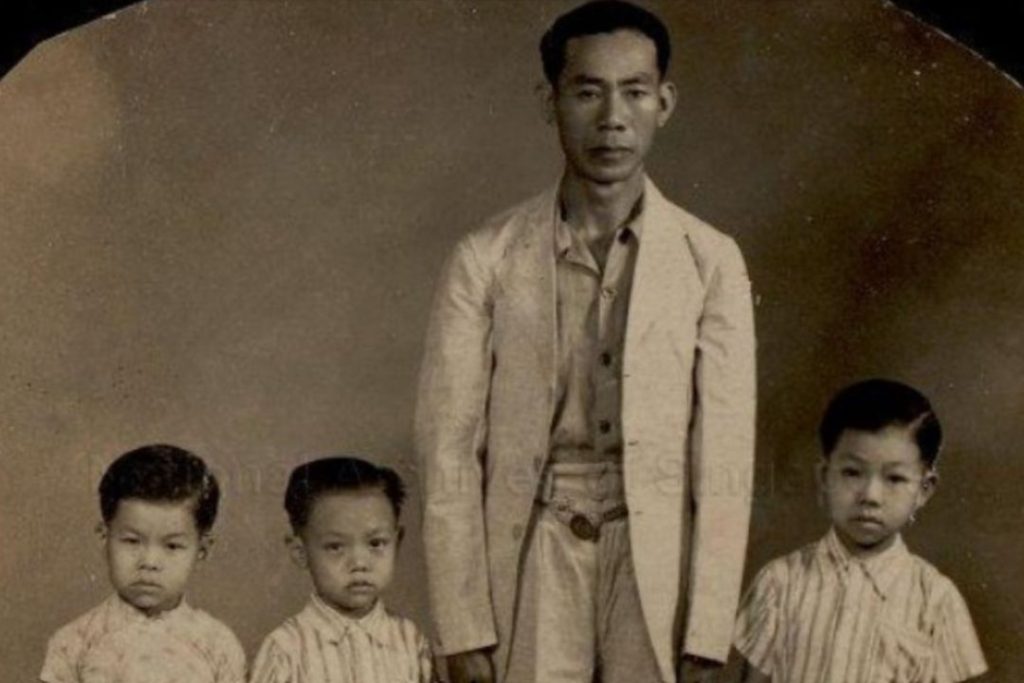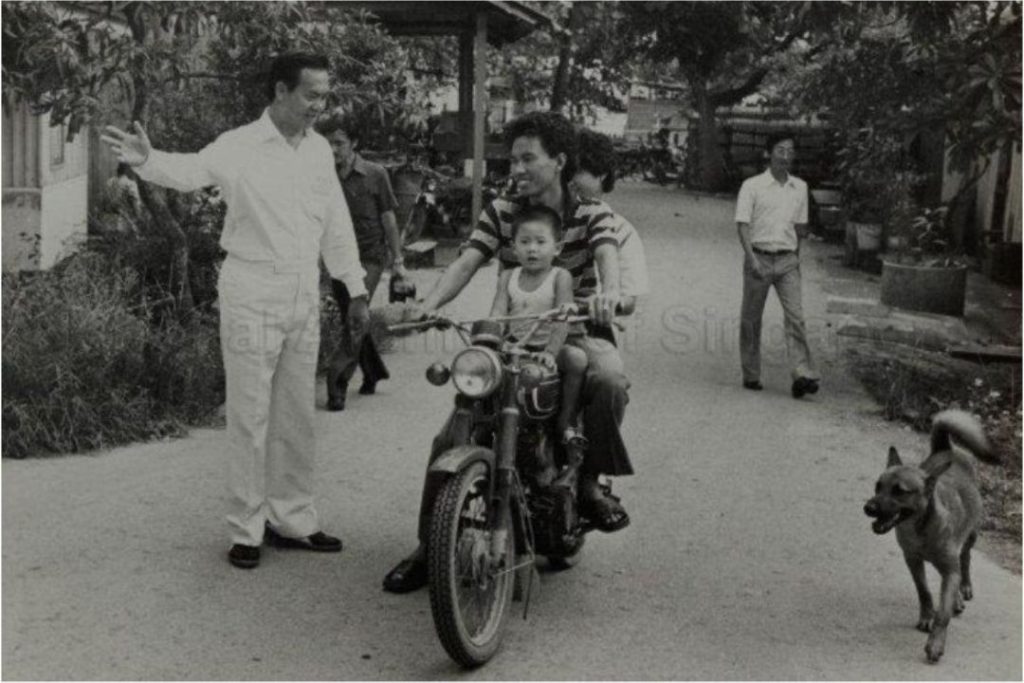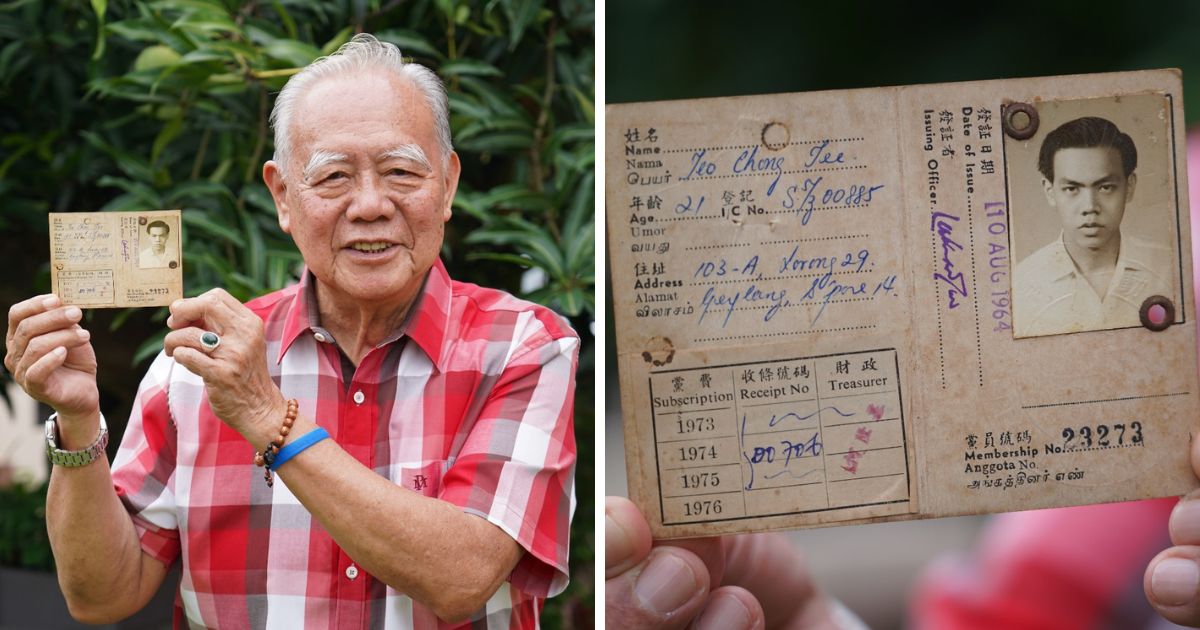In the 1960s, the PAP Geylang East branch was once set ablaze, and its signage was smeared with black oil, Teo Chong Tee, a retired Member of Parliament, recalled.
“One night, I was contacted and told, ‘Mr Teo, do you know what happened to your branch? The PAP signboard outside the house was smeared with black oil. They also set the branch on fire.’ When I arrived, fortunately, the neighbours had helped to put out the small fire. Otherwise, the adjacent attap houses would have been gutted.”
83-year-old Teo Chong Tee, BBM, was then managing the sub-branch at Geylang. He joined the Party in 1962 having been a volunteer since 1959, as a then Secondary 3 student.
Recounting the incident, Mr Teo said that a group of around ten Mandarin-speaking women from the Opposition political party Barisan Sosialis had visited his branch earlier. They questioned him aggressively and demanded that he stop helping the PAP.
Back then, he organised dressmaking classes twice weekly for interested housewives and a beauty makeup class for young women at the branch. During the day, the branch also operated a kindergarten class for about 20 students.
Mr Teo served as the MP for Changi SMC from 1976 to December 1996. Before that, he assisted various Members of Parliament like Lim Cheng Lock and Yeo Toon Chia. In the 1970s, Mr Teo was sent by his company Malaysia-Singapore Airlines to Taiwan for a four-year overseas posting.

Lee Kuan Yew sent me to Changi to address residents’ concerns: Teo Chong Tee
As the 1976 general election approached, Mr Teo received a call from the late founding Prime Minister Mr Lee Kuan Yew, informing him that he would be contesting in the Changi constituency.
This followed an earlier invitation to the Istana for an interview with Mr Lee, who was the founding Secretary-General of the PAP, and other members of the Central Executive Committee. The general election was scheduled for December 23 that year.
“The constituency encompassed attap and zinc houses, as well as farmlands, shops, and schools. There were farmers, shop operators, roadside hawkers, students and others. I knew it would be very challenging because I was going to take care of so many people from various backgrounds,” he said.
During the election, Mr Teo fondly recalled Mr Lee’s support at his street rally.
“He pointed at me and told the crowd, ‘I’m sending this young man to take care of your problems. You’re going to resettle soon, and he’ll handle it. He’s hardworking, from his airline job and work in the branch.'”
Mr Teo defeated his opponent with an overwhelming 72 per cent vote share when results were announced.
Teo Chong Tee: ‘Residents at Pulau Ubin were happy to share their problems with me’

After the election, Mr Teo held Meet-the-People (MPS) sessions twice a week. These sessions ran from 7pm until past midnight. Residents came to him from as far off as the offshore islands of Pulau Ubin, Pulau Tekong Kechil, and Pulau Tekong Besar.
Mr Teo recalled that his constituents often face problems relating to resettlement. He drew upon his family’s move from the Geylang kampung. “I understood the challenges residents faced,” he said.
Reflecting on his airline job, he added, “I attended to passengers, pleasant and difficult alike, listening to understand their concerns.”
“I told myself I would treat residents’ problems as my own. If it happened to me, how would I have handled it? I exercised patience, and most were delighted when their cases were resolved successfully.”
Teo Chong Tee engaged with residents in Pulau Tekong and Pulau Ubin directly
Back then, Pulau Ubin and Pulau Tekong were part of the Changi constituency. It took residents around 10 to 12 minutes to reach Ubin and about 25 minutes to reach Tekong from the mainland, Mr Teo recalled.
Mr Teo shared that he often held impromptu Meet-the-People sessions when visiting Pulau Ubin. “They were happy to share their problems with me directly, without needing to visit my branch.”
The workers on Pulau Ubin were mostly employed in the quarry industry, he noted, while many Pulau Tekong residents worked in the tobacco farm there. However, the Ministry of Defence required the island to train army personnel. Mr Teo oversaw the resettlement of the residents of Pulau Tekong.
Pulau Tekong had two distinct areas, one Chinese and the other Malay. Both communities could speak each other’s languages and dialect, Hakka being the predominant one.
He said: “The two communities coexisted harmoniously. During national day, I organised events on the island to bring the residents together. Whenever I arrived, those aware of my visit would warmly welcome me at the jetty. The residents of both islands were always happy to see me and engage with me directly.”
Among the resettlement cases Mr Teo handled, he helped the Management Committees of two Changi North temples in appealing to authorities to allow the temples to remain at their existing locations.
One was an old Sree Ramar Hindu Shrine used by a small Indian community residing at the Changi Village kampung during the British era. The other was the Mazu temple at Yan Kit Village opposite Changi Prison.
“Before venturing out to sea, fishermen would pray to Mazu for a safe journey there and back,” Mr Teo recalled. “After my vigorous appeals, the authorities allowed both temples to be redeveloped on their original sites.”
He noted that in other constituencies affected by resettlement, temples often had to merge and relocate elsewhere. However, the two temples in Changi have remained for Hindu and Taoist worshippers until today.
At 83, Mr Teo is the Chairman of an education institution. He remains active and often attends party events.
“I am healthy. I have kept myself active for so many years, and I will continue to keep myself active for the next few years.




